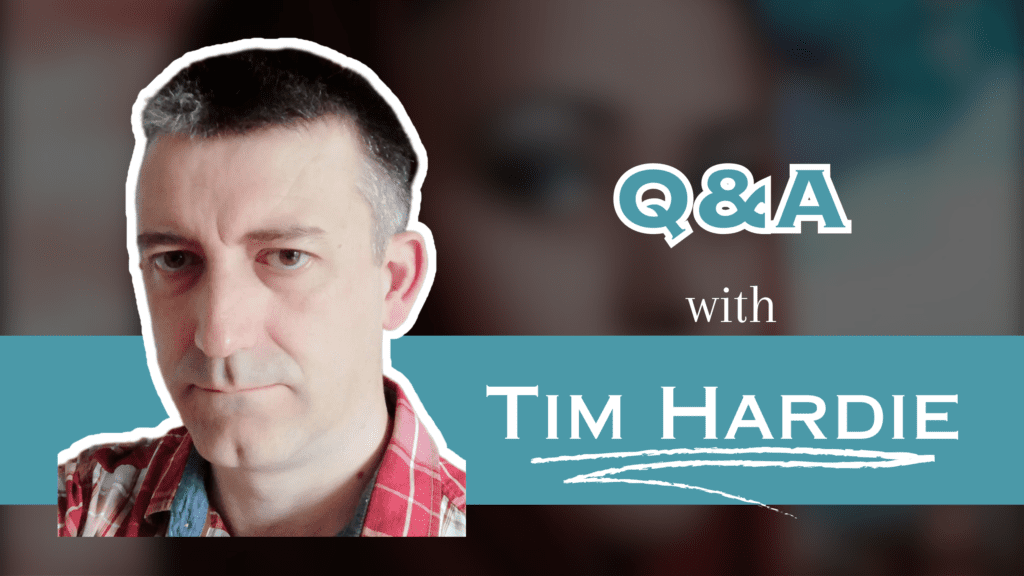
Tim Hardie, author of SPFBO7 finalist Hall of Bones has recently entered his new book, A Quiet Vengeance in SPFBO9. Being a huge fan of A Quiet Vengeance, I couldn’t help but ask Tim Hardie for an interview. Tim was kind enough to sit down with me to answer some questions I had regarding his process and inspiration.
- Hi Tim, congrats on A Quiet Vengeance being a SPFBO 9 entrant! How does it feel to be running for the second time?
Hi. Thanks very much. It’s a mix of emotions this time round. First of all, I’m relieved to even be in this year’s competition. That all 300 places were filled just 41 minutes after it opened for submissions is amazing and really shows how the profile of SPFBO is growing every year.
It’s definitely fun to be part of the competition. I’m enjoying the buzz that comes with that and it’s been good to interact with some of this year’s entrants and get to know a bit more about them and their books. However, there’s a degree of anxiety too, as you wait for that first review to drop which could decide your fate at any moment! Ultimately 290 books are going to get cut by the time this stage is complete, so it’ll get brutal by the end.
Being completely honest, there’s a degree of pressure with having been a finalist in SPFBO7. I’ve picked up a few comments on social media where some people expect A Quiet Vengeance to do well and, whilst I hope they’re right about that, luck plays such a big part in this contest. I think I’m in a very strong group where a number of books could advance through to the semi-finals. Your writing has to really click with your reviewer, so there are absolutely no guarantees. It’s not good for the nerves but I think the unpredictable, open nature of the contest is also a big part of its appeal.
From my point of view, my objectives for SPFBO9 are the same as they were for SPFBO7. I’ll be very happy to come away from this competition with a decent review from a high quality blog. I’m very happy to be in The Weatherwax Report’s batch this year, as Esme and Kristen are both excellent book bloggers and, whatever the result, I know they’ll be really fair and highlight the best aspects of the books they’re reviewing.
- It’s great to hear that you are having fun and getting to know the other entrants! And yes, the pressure is immense. What would you say sets A Quiet Vengeance apart from your previous SPFBO7 book Hall of Bones? What can the readers expect?
Both books are set in the same fantasy world of Amuran but whereas Hall of Bones and the rest of The Brotherhood of the Eagle series takes place in a Viking-inspired culture, A Quiet Vengeance takes its inspiration from the Middle East and North Africa. A Quiet Vengeance is also a standalone novel, rather than the first instalment in a series.
I’d say both novels are character driven in style but with A Quiet Vengeance there’s more emphasis on court politics, commercial negotiations and the intrigue surrounding all of that. It’s more of a slow burn character study than fighting and action, although you’ll find all those elements within the pages.
A couple of other deliberate stylistic choices were to limit myself to two point of view characters, so the cast is much smaller than in Hall of Bones. We follow events through the eyes of Crown Prince Dojan Al-Haraq in the present, with alternating chapters taking place in the past with the abandoned orphan girl Nimsah. That means A Quiet Vengeance has a dual timeline, which was necessary for the plot, allowing me to maintain an air of mystery about some key elements. The reader is left to speculate on the nature of the secret that ties Nimsah and Dojan together. Past events also drive the plot in the present day, having unexpected consequences. For readers who enjoy all the unpredictable twists and turns in The Brotherhood of the Eagle series, you’ll find plenty of those during the course of A Quiet Vengeance, even though it’s a relatively short book.
- We don’t see dual timelines being implemented in the Fantasy genre much but it worked really well in A Quiet Vengeance. What is your writing process like? Where do you get your inspiration from?
I set a goal of working each week on my books. Saturday mornings are my prime writing time, when I know I can get a good stint done and add a solid amount to the word count. Otherwise, I write as and when I have the opportunity during the week. That very much depends on what else is happening and my energy levels. Like most writers, I’m juggling this alongside other commitments such as work, family, friends and other hobbies. I don’t subscribe to the ‘write every day’ philosophy as you only have to miss one and you’ve failed for the week. What I’m aiming for is seeing steady progress throughout the year.
Novel writing can be a bit of a slog sometimes, especially when doing rounds of edits, going over the same manuscript time and again. I’ve found writing short fiction has been really useful, providing me with a break that enables me to see the novel manuscript afresh when I return to it. I include short stories with my bi-monthly newsletter and I’ve also contributed a couple of tales to some anthologies which are currently in the works – The Anatomy of Fear and The Advent of Winter. It’s very satisfying to be able to start and finish a creative piece quickly, which gives me a sense of achievement before going back to longer works.
I’m not sure I can really answer the question on inspiration in a definitive way – I wish I knew! I suppose it comes from every book I’ve ever read, stories consumed through the radio, TV, podcasts or the movies and life experiences. Those various influences have varied at different times in my life – for example I’ve gone through phases of avidly reading fantasy, whilst during other periods of my life I wasn’t interested in the genre.
On the specific use of a dual timeline in A Quiet Vengeance, I will highlight the sci-fi novel Use of Weapons by Iain M Banks, which was published back in 1990. I’ve actually written a blog about this particular work because it was so important in the creation of A Quiet Vengeance. I’ve been a fan of Banks’ writing for a long time but when I read this book it opened up my mind and helped me understand how structure could be used to better tell the story. Banks takes things to another level of genius in this book by employing a split timeline where one strand goes backwards in time, starting in the past but then moving further back with each successive chapter. It’s an incredible achievement.
Other influential writers for me over the years have been JRR Tolkien, Ursula Le Guin, Robin Hobb, George RR Martin, Joe Abercrombie and Neil Gaiman.
- That’s wonderful! Structure plays an important part in the telling of a story but so does characters, if not more. Nimsah is such a vivid and well realised character. How did you come up with the concept of her character?
That’s a difficult one. In some ways Nimsah is the mirror image of Dojan, especially when it comes to their respective backgrounds. Whilst Dojan is a prince and comes from a life of privilege, Nimsah is the complete opposite. Dojan is idle because life presents no challenge, whereas Nimsah has to be resourceful to survive. So in imagining Nimsah and what she needed to be to tell this story, I also had to visualise Dojan and ensure those characters dovetailed together.
The orphan girl living on the streets is obviously a familiar trope in many books, so those early years and her experiences working for Farooq in the City of Tents shaped her character. I wanted to show someone who is quick-thinking – Nimsah thrives under Farooq not because she has incredible powers or is super strong. She makes her way in the world because she’s intelligent, knows what’s important and sees the little things other people miss.
That got me thinking about what she might have been, given a different start. At the very beginning of the book we learn Nimsah has escaped her old life and risen in society. One of the fundamental questions posed by the novel is how has Nimsah made that transition from one life to another? When Dojan meets her as an adult, is she still the same person as the child we follow in her earlier timeline?
- I love the theme of “nature vs nurture” explored in the book through the characters. I also loved the political intrigue and the associated themes explored in the book. Was there any real world inspiration for the political intrigue?
Only in a very general sense. In fantasy literature we tend to see power structures based around dynastic lineages, magical orders and religion. I wanted to explore a different angle concerning unaccountable power, which is something we see in the real world, where global corporations can grow so large they become more powerful than many countries, their reach crossing multiple borders. That was where the idea for the Bank of Illesh and the wider banking clans came from. Rulers may be deposed, a magical order might be defeated, whilst religions can wane in their popularity. Yet how do you fight against a power that spans the globe? Do you just accept that or try and resist it? This question is at the heart of all the political negotiations we see in the novel in the city state of Kandarah.
So A Quiet Vengeance isn’t inspired by any specific organisation or real world event, but those general themes are present in the novel.
- That is a very fascinating aspect of the story that added more depth to the world. You mentioned earlier that A Quiet Vengeance has taken inspiration from the Middle East and North Africa. Would you say it’s a historical fantasy? What, according to you, does the added context of history bring to the story?
I wouldn’t classify it as such, since it’s not based on real world events or specific nations, but I think people who enjoy historical fantasy will find things to like in A Quiet Vengeance. Those overall inspirations are more about infusing the world with a distinctive sense of place, helping to make it feel more real. This is a work of fantasy but if you like court politics, plots and intrigue then this book will be for you. The low fantasy setting of this book may also appeal to people who like a more grounded reading experience, although magic does still play an important part and will become more prominent as I continue these stories.
- Thank you for the clarification! What kind of setting do you prefer for your books- low or high fantasy? How does setting affect the way the story is being told?
My books often get described as low fantasy, although magic of different kinds does feature prominently in all of them. I think that’s partly because I mix this up with more realistic elements in my stories and I have a lot of readers who say in their reviews the setting felt ‘real’ or ‘historical’. I think that’s really the difference – low fantasy is a bit more grounded and closer to our everyday experiences, whereas high fantasy places more emphasis on magic, different fantasy races and the like. If asked to categorise my writing, I would call it dark epic fantasy, but my style so far definitely comes out more towards the low than high end of the fantasy scale.
I think low fantasy probably suits my style a bit more in that there’s more emphasis on the characters, their internal dialogue, wants and needs. High fantasy tends to be more epic in scale and the general stakes are higher, so the focus is much more on that. Both my series involve situations where the outcome will have ramifications on a global scale. However, in normal life we experience events on a personal level, so that feels a more natural place for me to start when telling my own stories.
- That’s a great way to put it! What are your plans for Samarak Tales?
Right now, my immediate plans are focussed on completing The Brotherhood of the Eagle series. I’m about 75,000 words into the fourth and final novel, Broken Brotherhood, and I’ll be working on that for the remainder of this year, with a view to publishing that novel in 2024.
At that point, I’ll then face a choice about which way to go next:
- Completing The Wolf Throne, which would be a new independent standalone novel, based on the free short stories I’ve been sending out with my newsletter.
- Exploring an as yet untitled novel based on the setting I used in The Advent of Winter short story collection. This would be a fae-inspired tale.
- Writing the second book in Samarak Tales, which will be called A Quiet Betrayal. This would be another standalone, so it will feature different central characters but there were a couple of deliberate loose ends in A Quiet Vengeance I intend to deal with in that story. I’m also toying with the idea of using Use of Weapons’ narrative device of a reverse dual timeline, which may or may not be a good idea!
- Starting a novel based on the world created for my short story in The Anatomy of Fear anthology, which has a working title of Compulsion. This is a new fantasy world, entirely separate from Amuran and my previous works.
The first two options would be set in the Viking-influenced lands of Laskar but farther to the west or east, so they concentrate on different clans to those prominently featured in The Brotherhood of the Eagle. A Quiet Betrayal would allow me to develop the Middle Eastern and African setting of Samarakand further. As a new fantasy world with more of a gaslamp feel, Compulsion would have the potential to be of interest to traditional publishers.
Sorry, that’s quite a long answer to a short question! The point I’m making here is it depends. I do have plans to continue to develop Samarak Tales with further standalones but I don’t know how I’ll feel when I get to 2024 and The Brotherhood of the Eagle is complete. A Quiet Vengeance was actually written in 2019-2020 to provide me with a break from that series, after I became bogged down and mentally exhausted with the novel Lost Gods. Where I go next in 2024 is going to depend on my mood and which project excites me the most. I know from past experience you have to write the project you love the most, as I don’t produce my best work when I ‘battle on’ to complete a novel I’m not completely invested in.
The good news is I have plenty of ideas for potential future projects, and I can guarantee I will definitely be writing at least one of the above during the course of 2024. Watch this space!
Thank you so much Tim Hardie for your time. I had a blast chatting with you and wish you all the best in your journey. A Quiet Vengeance is available on Amazon and Kindle.
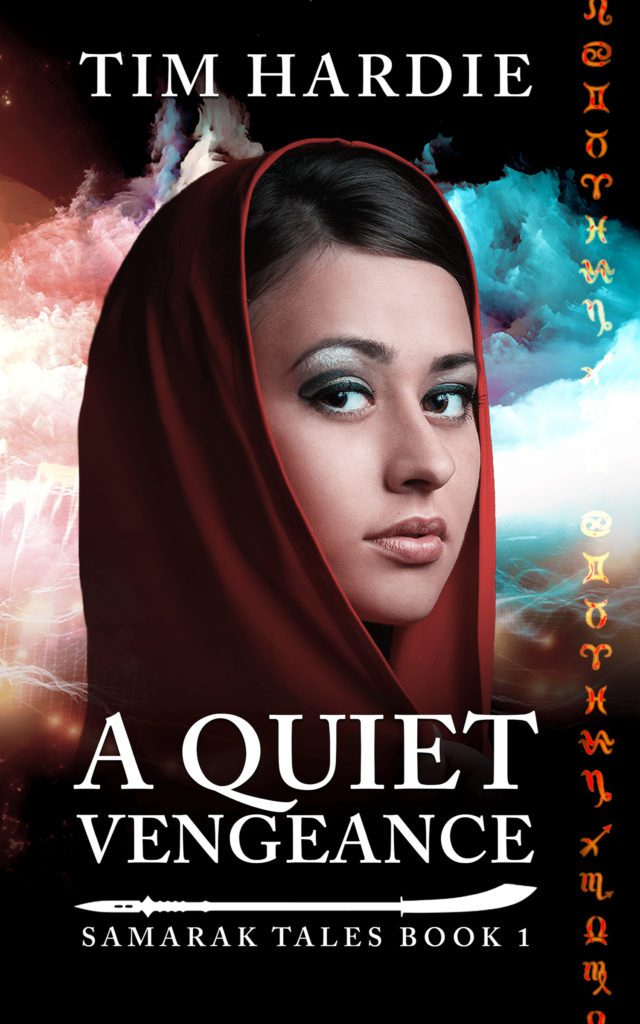

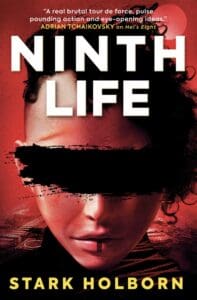
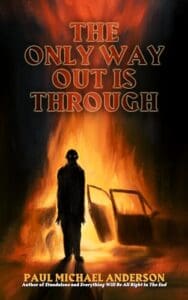
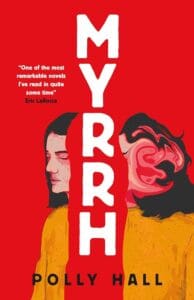
Brilliant interview Diya and Tim.
I enjoyed learning more about how you go about your work Tim and the insights have whetted my appetite to read A Quiet Vengeance.
I loved Hall of Bones and plan to read the rest of the series soon.
Best wishes for your WIP and future projects Tim and keep the great interviews coming Diya.
Thank you so much for your kind words!
What a great interview! Well done to you both. Tim can we please order all of those future books you mentioned, they all sound fantastic
Thanks Charlie! I am with you, the upcoming books sound fantastic.